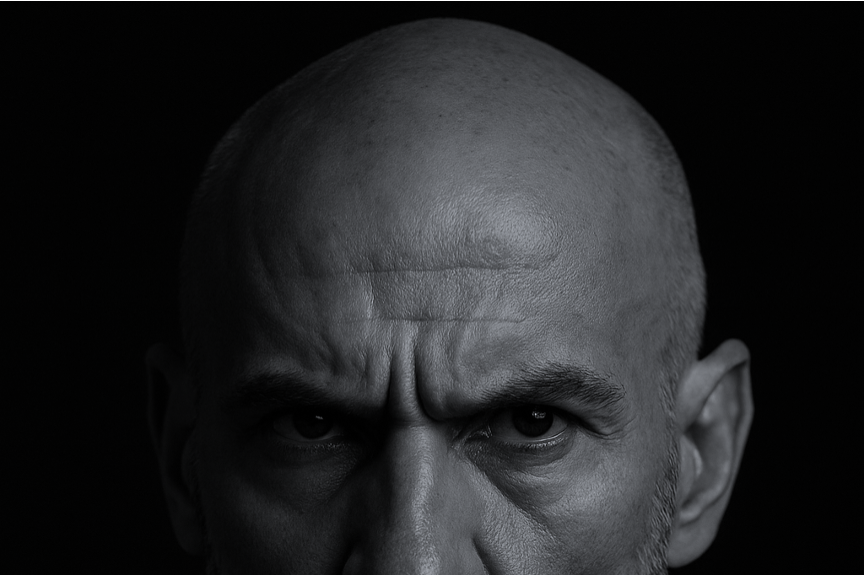“Work smart, not hard.”
The phrase has been repeated so often it’s lost its punch.
But today’s most effective leaders know the real mantra: Work smart, recover harder.
This is Part 1 of my executive health series titled, “Beyond Grit” and focuses on what I call “The Energy Equation.”
Notice
I’m not a medical professional. These insights are drawn from my experience coaching and advising over 1,000 senior leaders—observing firsthand how those who prioritize mental and physical health consistently outperform. This article is intended for informational purposes only and should not replace medical or professional advice.
The Grit Myth: Why ‘Effort’ Fails Without Recovery
For years, grit was the gospel. Push harder. Sleep less. Power through.
And for a while, it worked—until it didn’t.
The modern executive landscape has shifted from marathon to ultramarathon. The problem? Most leaders are still running on yesterday’s model of endurance. According to McKinsey, the average knowledge worker spends nearly 65% of their week in meetings or emails, yet reports less than half that time as value-creating. The result is a culture of exhaustion disguised as productivity.
Grit alone no longer scales. In fact, over-indexing on grit becomes stubborn inefficiency.
What differentiates today’s top performers isn’t who works the longest, but who manages their energy the most intelligently.
As McKinsey’s The New Case for Brain Health found, “Leaders who invest in cognitive recovery outperform peers on adaptability and decision speed.”
Peak performance isn’t about more hours—it’s about more energy per hour.
The Energy Equation: Recovery as a Performance Multiplier
Think of performance like an equation:
Performance = (Energy × Focus) ÷ Stress Load
Most leaders obsess over the numerator—energy and focus—while ignoring the denominator. But unmanaged stress quietly drains both.
That’s why elite performers—from Navy SEALs to Fortune 100 CEOs—design recovery into their operating rhythm. They understand that recovery is not rest; it’s preparation. The world’s best athletes don’t train nonstop—they train, recover, and adapt. Leadership is no different.
Deloitte’s Human Sustainability at Work research reinforces this: organizations that intentionally design around energy renewal report 21% higher performance and 46% higher retention. When energy becomes an organizational metric—not an individual afterthought—output improves across every KPI.
Leaders operate across three interdependent energy domains:
- Physical Energy — the foundation.
Sleep, movement, and nutrition determine cognitive sharpness and stamina. The body fuels the brain. - Mental Energy — the amplifier.
Clarity, prioritization, and reduced cognitive load drive decision quality. Multitasking kills velocity. - Emotional Energy — the integrator.
Relationships, purpose, and autonomy define how we sustain pressure without fracturing.
Neglect one domain, and the system fails.
Cultivate all three, and you create a compounding advantage—more creativity, faster recovery, clearer judgment.
As one CEO client put it after finally scheduling “white space” thinking blocks:
“I stopped reacting—and started leading again.”
Micro-Recovery Strategies for Executive Energy
Recovery doesn’t have to mean a sabbatical or weekend retreat. The best leaders deploy micro-recoveries—short, deliberate resets embedded inside the workday.
McKinsey’s Investing in the Future: How Better Mental Health Benefits Everyone shows that even modest mental-health interventions yield productivity gains of up to 12%. The ROI is measurable—and repeatable.
Some proven strategies:
- The 90/15 Rule: Work in 90-minute deep-focus blocks followed by 15 minutes of complete disengagement.
Walk. Stretch. Breathe. Don’t scroll. - No-Meeting Zones: Protect two uninterrupted hours weekly for strategic thinking. Guard it like revenue.
- Digital Hygiene: Set “tech sunset” hours to protect sleep and cognitive reset.
- Purpose Pairing: Align recovery moments with meaning—time with family, journaling, or simply gratitude reflection.
These aren’t soft practices. They’re systems that protect cognitive bandwidth and stabilize executive energy curves.
Recovery is the hidden infrastructure behind sustainable output.
Sustainable output is not willed—it’s engineered.
The Executive Energy Audit
When was the last time you audited your energy like you audit your P&L?
Most leaders track revenue, margins, and cost of capital—but never the asset that drives them all: personal energy.
Before the next board meeting or quarterly review, pause and ask:
- Am I operating from energy or adrenaline?
- Is my health strategy intentional—or incidental?
- Would my team describe me as energized—or drained?
Your answers form your true leadership scorecard.
In the same way top CFOs use dashboards to monitor liquidity, the best executives track vitality metrics—sleep quality, recovery, stress variability, mental load. Because what gets measured improves.
Next week, in Part 2 of this Beyond Grit series, we’ll shift from physical energy to the mental frontier:
how brain health and cognitive clarity define the modern CEO.
The New Currency of Leadership
In closing… the leaders who outperform don’t outwork others—they out-recover them.
Because in today’s economy, energy is the new strategy.
And the smart leader treats recovery not as downtime, but as an operating discipline.
Sam Palazzolo
Real Strategies. Real Results.
